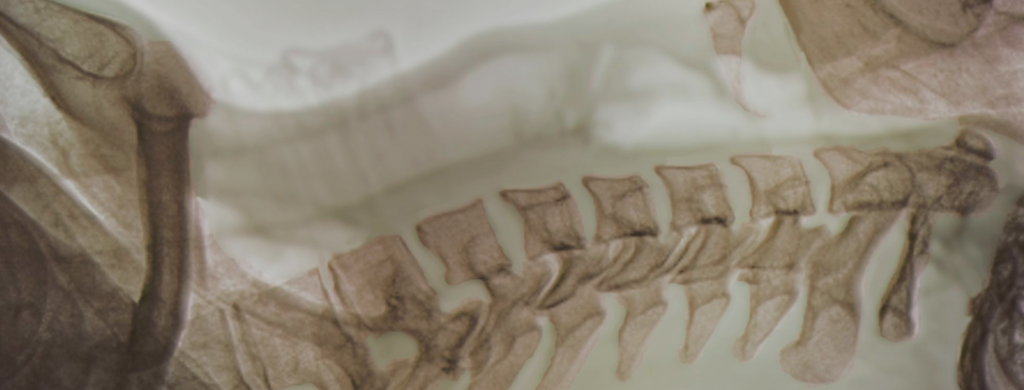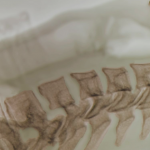The Wilderness Medical Society (WMS) reconvened an expert panel to update a set of evidence-based guidelines for spinal cord protection to guide clinicians and first responders in best practices during management of the injured or potentially injured spine in wilderness environments. Below is a summary of the clinical practice guideline.
INTRODUCTION
Techniques for immobilization and extrication of the patient with a real or potential spine injury have been implemented for decades, unfortunately without high-quality evidence supporting their use. There is little evidence to support the effectiveness or necessity of these techniques, and increasing evidence suggests that such interventions may be harmful. Although the expert panel was unable to identify a single well-documented case in the literature showing out-of-hospital neurologic deterioration as a direct consequence of improper or inadequate immobilization, many cases have documented severe morbidity, and even mortality, secondary to immobilization itself.
The focus of the guidelines is to present an evidence-based approach to management of potential spinal trauma that minimizes the possibility of neurologic deterioration or injury. While the guidelines specifically address wilderness care, the authors point out that the evidence presented and the conclusions made should be applicable in any out-of-hospital environment.
A key philosophical difference between this and prior WMS spinal care guidelines is the move away from technique-based principles, determining when and how to immobilize (often using an algorithm), to the goal-based principle of spinal cord protection (SCP) for determining how to best protect the spine.
SCOPE OF THE PROBLEM
Current evidence suggests that spinal motion restriction (SMR) may be the most appropriate mechanism currently available to protect the spine. SMR is very different from immobilization and does not provide true immobilization. The goal of SMR is to protect a potentially injured spine by minimizing unwanted movement. Current evidence also suggests that rigid immobilization via cervical collar or backboard is not an effective or safe means to accomplish this goal and can result in a worse patient outcome in both blunt and penetrating trauma.
Deciding whether to explore SCP measures can be safely accomplished by practitioners with at least a basic working knowledge of the fundamental elements. That is, the practitioner should be able to recognize degrees of major trauma, identify mechanisms of injury with the potential to cause spinal injury, perform a basic physical examination of the spine and neurologic system, recognize distracting injuries, and consequently recommend passive SMR, soft padding, or vacuum splinting.
All patients with evidence of neurologic deficit should have SCP principles implemented, avoiding total immobilization. Patients do not require any more aggressive intervention than passive motion restriction with soft interventions like padding or encouragement of conscious patients not to move in any way that is painful. No special algorithm is required. All that is required is the intuitive consideration of reducing motion if injury is suspected with SCP as the ultimate treatment goal.
In the wilderness environment, the goal of spinal assessment and care should not be to definitively rule out or recognize all forms of spine injury. Rather, the goal should be to minimize the risk of missing and/or exacerbating a potentially unstable spine injury. The risk of missing such an injury should be appropriately calibrated against the risk of exposing rescuers to the potential for serious injury or causing further injury to the patient. Definitive spinal evaluation can and should be performed upon arrival at an appropriate medical center but is not a feasible goal for wilderness medical care.
SUMMARY OF RECOMMENDATIONS
- Preferred Position of the Injured Spine: Neutral alignment should be restored and maintained using nonrigid tools during extrication, unless such a maneuver is met with resistance, increased pain, or new or worsening neurologic deficit.
- Methods of Extrication and Management Goals: Immobilization should not be a goal for spinal injury management. For some time, evidence has supported that spinal immobilization should not be performed for isolated penetrating trauma. Now, the possibility that immobilization may increase morbidity and mortality in all types of potential spinal trauma cannot be excluded. SCP should be considered an appropriate goal in patients with actual or suspected spinal injury. SMR and not immobilization is the safest and most effective means of protecting the spine. The author group cannot find any case studies in which harm was caused by failure to place a cervical collar or a backboard, but they did find increasing evidence that placement of these tools can cause harm. With clear instructions, patients appear capable of maintaining a stable neck for extrication without a cervical collar. Patients requiring extrication should be encouraged to reduce movement of the neck, especially painful movement, and allowed to exit the situation under their own volition if alert and reliable. If injuries or other circumstances such as unconsciousness prevent controlled self-extrication, patients’ cervical spines should be packaged to reduce passive motion and the airway adequately managed without a goal of absolute immobilization. There is no requisite role for commercially made or improvised rigid cervical collars in any out-of- hospital environment.
- Moving a Patient with a Real or Potential Spine Injury: The lift and slide transfer with trapezius squeeze is preferred to the log-roll when transferring patients when motion restriction is desired. In the case of facial fractures, an unconscious patient, or other scenarios concerning for airway compromise, the lateral position may be considered. Light to moderate traction should be used when returning a cervical spine to the anatomic position and transferring a patient.
- Effectiveness of Cervical Collars (C-Collar): Little evidence exists to indicate cervical collar effectiveness in immobilizing the cervical spine or that immobilization of the cervical spine is helpful. One study showed that cervical collars require additional padding to maintain the cervical spine in the neutral position. Other studies have shown that cervical collars can increase the risk of aspiration, directly compromise respiration, elevate intracranial pressure, cause pressure ulcerations, and conceal important physical findings (soft tissue injuries, tracheal deviation, subcutaneous air). Overall, commercially made or improvised rigid cervical collars have numerous identified risks and no demonstrated benefit. Commercial or improvised soft cervical collars should be considered one of several tools available to aid in reducing cervical spine motion. It should not be used if the presence of the collar in itself compromises emergent patient care. There is no requisite role for rigid cervical collars in wilderness out-of-hospital trauma care. If spinal cord protection is desired, appropriately trained personnel using either the NEXUS criteria or the Canadian C-spine rule can safely and effectively make decisions in the out-of-hospital setting regarding whether cervical spine motion should be reduced. A vacuum splint is preferable to a rigid collar.
Additionally, if the medical history is known, use of any rigid cervical collar is contraindicated in ankylosing spondylitis. Patients with suspected injury should have their neck supported in a position of comfort.
- Backboard: A vacuum mattress provides superior motion restriction and improved patient comfort and is preferred over a backboard for motion restriction. Backboards and other rigid carrying devices may be used for temporary patient movement if needed but should not be applied as a medical tool with an immobilization goal.
Published September 24, 2020
Volume 37, Issue 3
Learn more about the Wilderness Medical Society and how you can join as a member and help us lead the worldwide community of Wilderness Medicine.



